On View
Joe Reihsen on ‘Missed Connections’ and His First Solo Show in New York
The LA artist tells us how Craigslist can come in handy when naming paintings.
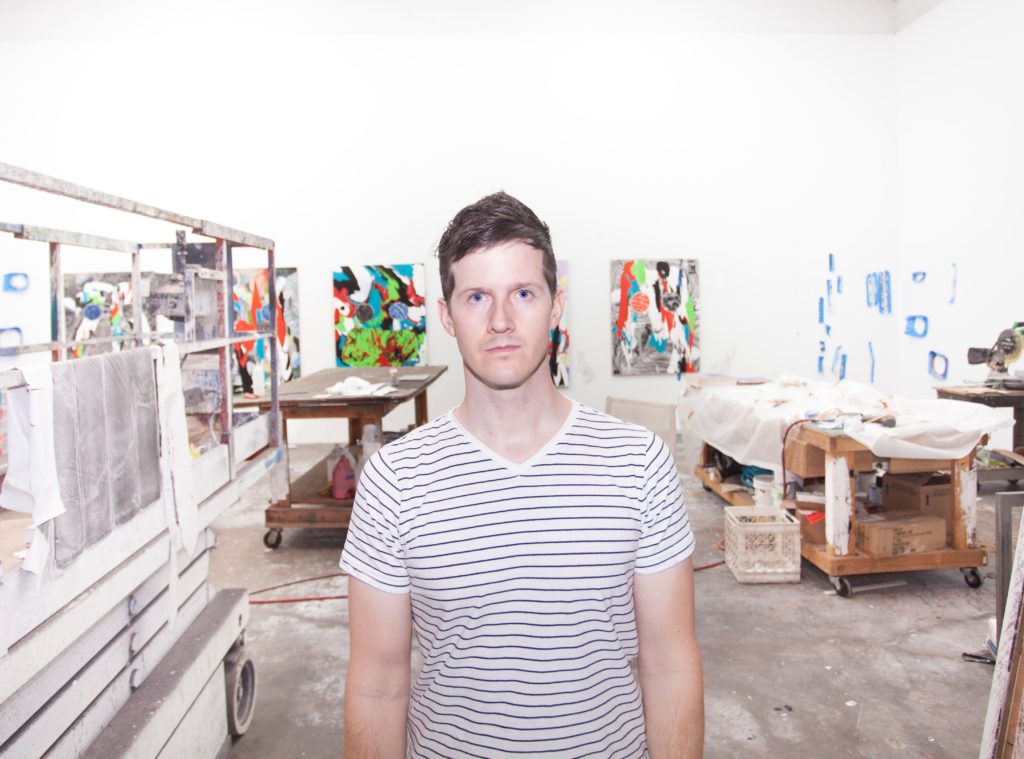
The LA artist tells us how Craigslist can come in handy when naming paintings.

Caroline Elbaor

After years of exhibitions in Paris, Milan, and London, New York City is finally getting its turn to host painter Joe Reihsen.
The Los Angeles-based artist opened his first solo show in the city on November 5 at The Hole with “About Face,” a presentation of 18 canvases that fill the gallery’s 3,800 square-foot space.
Originally from Minnesota, Reihsen initially made his move to the West Coast to attend the San Francisco Art Institute, where he painted while also dabbling in performance. He settled in Los Angeles, which he credits for the use of bright colors in his paintings.
Beyond his ability to cross genres, the artist is also prolific: all the paintings in the show were made in 2015 or later. The most recent paintings mark a shift from abstraction to figuration, leading to the title “About Face.” A reference to his change—or “about face”—to the figurative, the name also alludes to the hidden subjects in the works on view.
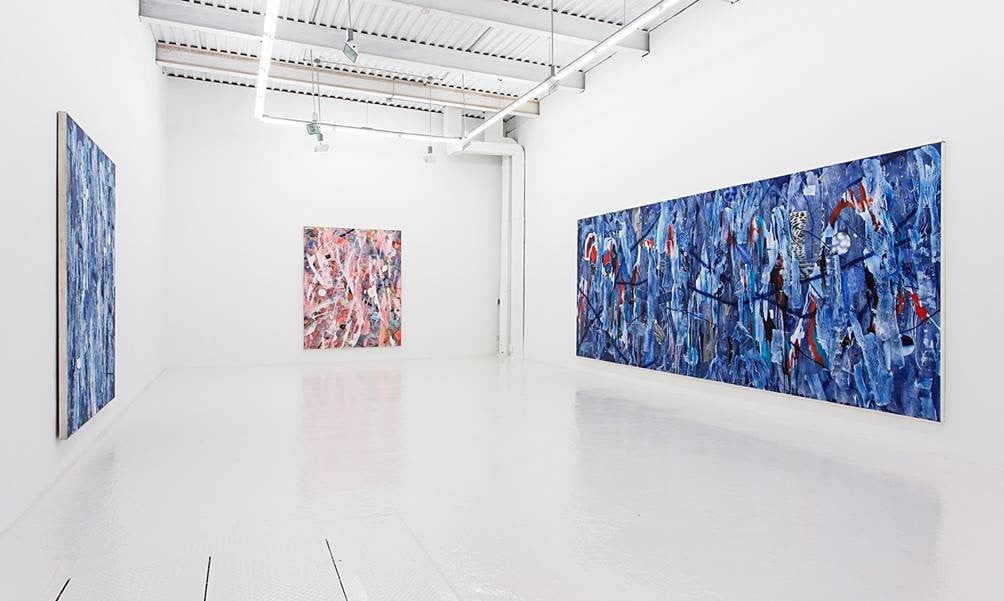
Joe Reihsen, installation shot. Courtesy of The Hole.
artnet News sat down with Reihsen at The Hole—as the show was still mid-install and colorful canvases abounded—to talk about the shifts in his work, the role of the Internet in art, and how Craigslist can come in handy when naming paintings.
Your work seems to be spoken about in relation to digital versus analog. Would you say that’s an accurate interpretation?
I think of my work more in the tradition of Abstract Expressionism than anything that takes the internet or digital technology as a core starting point. My work is about the body, and the degree to which it is understood as having a digital sensibility is a combination of personal projection from the viewer, and also my own use of Photoshop as a practical tool. The big brush strokes, that’s the movement of my body. The skins that are applied after the facts, that’s all the body.
You didn’t just wake up one morning, and think to yourself, “I’m going to start making figurative paintings,” did you?
I try not to think when I’m in the studio. I just paint. And I think about the works after I’ve made them, and that is when I’ll start saying “oh, this looks like a face.” So I just embraced it. A lot of where the developments in my work happen is when I embrace something that happened unintentionally.
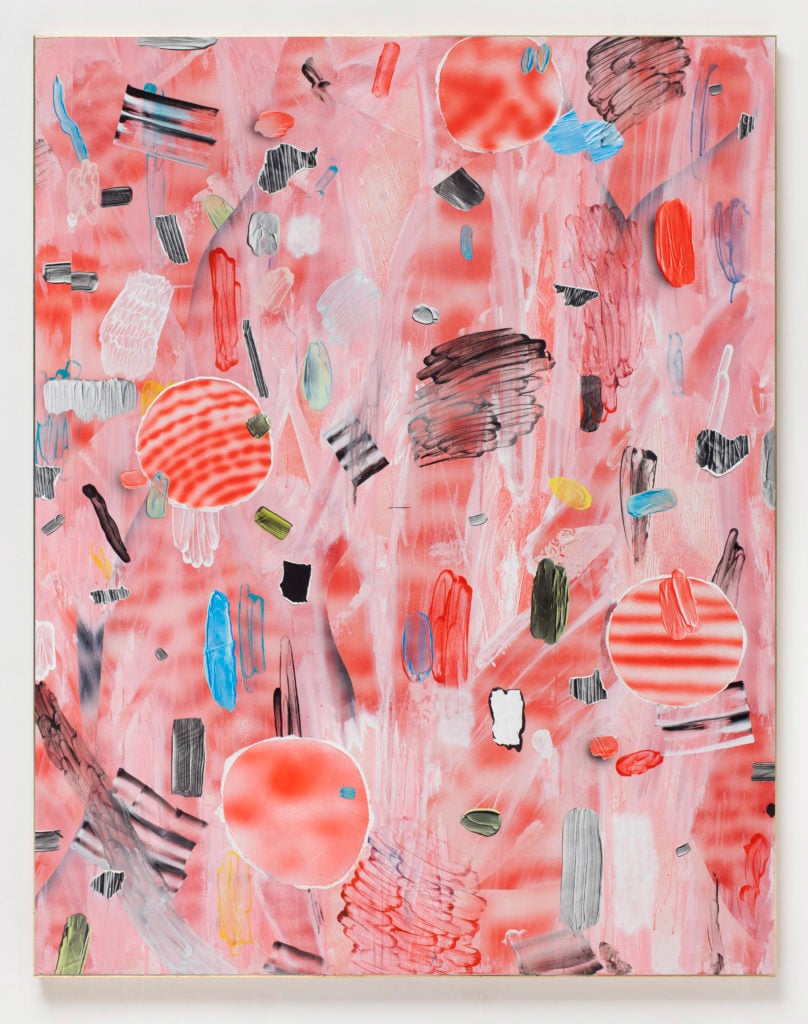
Your Beefy MUSCLES Are HOT! (2016). Courtesy The Hole, New York.
Will you expand on this idea of your work being about the body?
In some works, the body is foregrounded more than others—especially in the large blue work in the show Double Wide. The brush strokes are full body. The legs and hips are involved at that point, especially at that scale. The paintings that are made in tandem on plastic, then peeled away from and applied as skins to the works on panel. After the gestural work, the paint is literally a skin, and paint itself has always been a stand in for flesh.
What do you mean when you say the brush strokes are “full body”?
You know how if you look at a digital print, there is no body there—no human behind it at all? If you look at small pencil drawings, there is very little body in it, just fingers and hands, usually.
It’s meaningful to me because the reason I stopped using the computer as a starting point was that it really restricted the body.
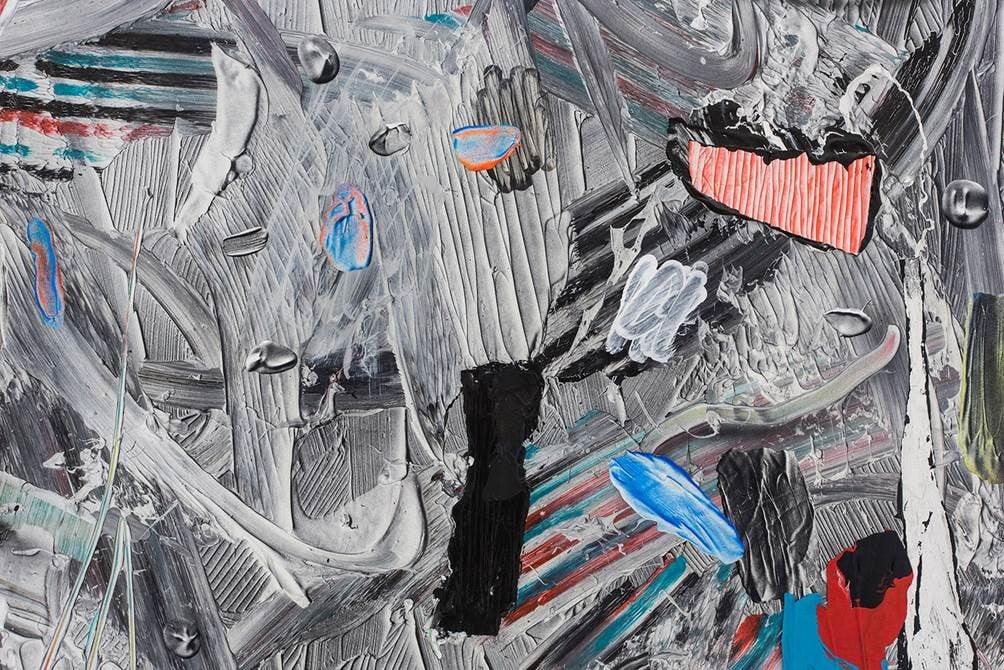
Close up of Joe Reihsen canvas. Courtesy of The Hole.
You draw the titles of your works from the Craigslist “Missed Connections” section. Why is that?
I like to rely on systems to name works. One of my favorite is the Missed Connections section because the text is just so hilarious. There is such hopefulness there, they are basically sending a message in a bottle, hoping somebody gets it. I feel like sometimes that’s what its like to be an artist.
Another interesting layer with “Missed Connections” is that it embodies one of the salient qualities of the internet that have come to define our culture: that sense that we have something that brings us all much closer in many ways, but consequently greatly expands the space between us in many other ways.
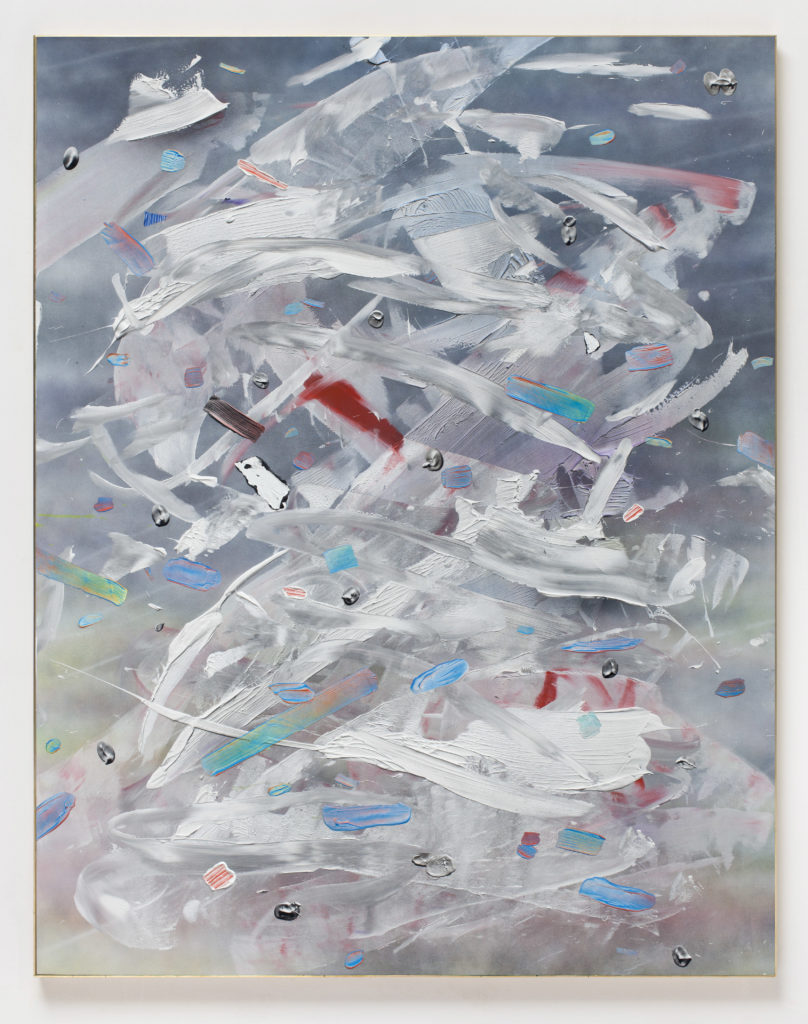
Everything Fits (2015). Courtesy The Hole, New York.
What do you think of the popularity of the term “post-internet” art?
I find the idea of art being called “post-internet” to be boring. Of course we are all submerged in a digital world and the boundaries between what’s real and imitated are blurry. That’s not why I paint. [The internet] can inform the work, but it doesn’t need to be right front and center all the time.
So much of the talk about the internet in art doesn’t take advantage of reanalyzing the Frankfurt School of thought—or even early Modernism—when we’re talking about the move from a rural situation into an urban one, where we all live very close together, but don’t know your neighbor.
So there’s a sense of alienation that’s brought about by contracting the space theoretically between you and other people. That’s what the internet does.
This interview has been edited and condensed.